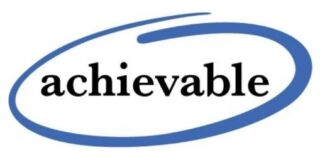Making A SMART New Year’s Resolution
Are you making a resolution for 2018? Did you know that one-third of resolutions don’t make it past the end of January, according to time management firm Franklin Covey, the company that also make those nice day planners.
A lot of these failed resolutions are the result of not picking the right one where they may be wrong because:
- It’s a resolution created by someone else (ie. Society)
- It’s a resolution that is too vague and becomes too big to handle
- It’s a resolution with no realistic plan
Instead, your resolution should be SMART. It’s an acronym from the journal Management Review, which stands for specific, measurable, achievable, relevant and time-bound. It may work for management, but it can also work in setting your resolutions, too.
Let’s use the resolution, “I want to lose a lot of weight this year” compared to “I want to lose five pounds by the end of February.”

Specific. Your resolution should be crystal clear and absolute. Making a solid goal is really important than to vaguely say, “I want to lose a lot of weight this year.” This resolution isn’t specific on how much weight you are going to lose. For example, a better resolution would be “I want to lose five pounds by the end of February.” This resolution is more effective because you have set a weight that is specific and achievable.

Measurable. A weight loss or fitness goal may seem obvious for this one, but it can be used if you’re trying to cut back on a habit, such as smoking. For instance, if you want to quit, then you can track your progress by keeping a log, such as a journal or a note on your phone. Tracking your progress can help your goal with positive reinforcement, which will give you that happy feeling to keep going.

Achievable. This doesn’t mean you can’t have big results, but it is better to make them into smaller and achievable goals. In our example, you can “lose five pounds by the end of February” and repeat it after you reach it. Thus, you could lose 30 pounds by the end of the year (5 lbs/2 months). This smaller goal sounds more achievable than to say “I want to lose 30 pounds in the year”, which sounds more daunting and could create more anxiety leading up to failure.

Relevant. You should always make sure that you’re making a goal for the right reasons. You don’t want to lose weight just because everybody else is doing it; instead, evaluate your needs. Does losing weight benefit your health? Perhaps go to your doctor and ask if your BMI (Body Mass Index) is in the healthy range. For other resolutions, if you do it out of the sense of self-hate or remorse or a strong passion in that moment, it doesn’t usually last long. But, if you build up a process where you’re thinking harder about what’s good for you, you’re changing the structure of your life, you’re bringing people into your life who will reinforce that resolution, and then you have a better chance of achieving your resolution.

Time-bound. This is like achievable, where your timeline should be realistic. This means you’re giving yourself enough time to do it with lots of smaller intermediate goals set up along the way. In our example of losing “five pounds by the end of February”, this timeline is realistic because if you were to cut 500 calories from your typical diet, then you should be able to lose 1 pound per week, which would give you ample time with this allotted deadline of February.





